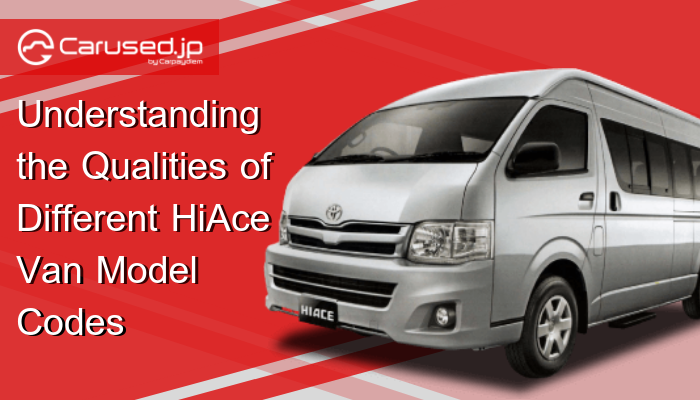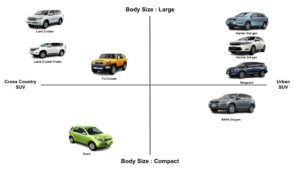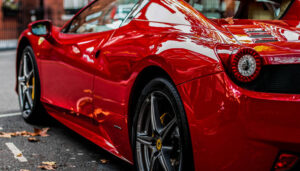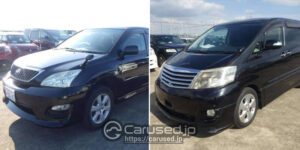The Toyota HiAce is undeniably one of the most popular vans in the world. For decades, it has been a reliable vehicle for personal and commercial use. No matter what model year you choose, you can get the same efficiency and functionality as you can expect from a Toyota HiAce van. However, fourth generation models are probably among the most notable releases from this line.
When you look at our used Japanese car catalog, you’ll likely see the model codes RZH112 LH172, LH178, RZH102, and LH113. These HiAce vans have been a staple in the used JDM vehicle market. After all, their user-friendly features make them ideal for a wide range of customers.
Fourth Generation Toyota HiAce Van History
Initially released in August 1989, the fourth generation of the Toyota HiAce van run until 2004. Through the years, various improvements were made on the features and engines of the lineup. Moreover, when there was a growing demand for 1-box, high-grade multi-purpose vehicles, Toyota revamped the HiAce to feature luxurious internal and external design and equipment.
Due to the size and high reliability of the HiAce, it has been used as a base platform for ambulances. In the early 90’s, Toyota patterned the high-grade ambulance line, called Himedic, after the HiAce van. The Japanese automaker equipped the vehicle with the same V8 engine used for the Celsior.
Technical Specifications of Model Codes RZH112 LH172, LH178, RZH102, and LH113
In general, different models of fourth generation Toyota HiAce fall under three major grade categories—2400EFI Super Custom Limited, 2000EFI Super Custom Limited, and 2400 Diesel Turbo Super Custom Limited. To understand how they vary, take a look at their technical specifications:
Grade: 2400EFI Super Custom Limited
Model Type: E-RZH101G-MFPQE
Curb Mass: 1810 kg
Length: 4615 mm
Width: 1690 mm
Height: 1980 mm
Wheelbase: 2330 mm
Engine code: 2RZ-E
Engine type: Water-cooled, in-line 4-cylinder, OHC
Displacement: 2438 cm2
Max output kW/(PS)/r.pm: -/120/4800
Grade: 2000EFI Super Custom Limited
Model Type: E-RZH100G-MFPQE
Curb Mass: 1810 kg
Length: 4615 mm
Width: 1690 mm
Height: 1980 mm
Wheelbase: 2330 mm
Engine code: 1RZ-E
Engine type: Water-cooled, in-line 4-cylinder, OHC
Displacement: 1998 cm2
Max output kW/(PS)/r.pm: -/110/5200
Grade: 2400 Diesel Turbo Super Custom Limited
Model Type: Q-LH100G-MFPQX
Curb Mass: 1900 kg
Length: 4615 mm
Width: 1690 mm
Height: 1980 mm
Wheelbase: 2330 mm
Engine code: 2L-T
Engine type: Water-cooled, in-line 4-cylinder, OHC, turbocharged
Displacement: 2446 cm2
Max output kW/(PS)/r.pm: -/94/4000
Notable Improvements on Fourth Generation Toyota HiAce Vans
When the fourth generation was released in 1989, Toyota added several improvements to the line. For instance, the company reviewed the engine lineup, replacing the 2L petrol engine with the 1RZ-E. Moreover, the automaker added the 2.4L 2RZ-E petrol engine to the lineup.
Throughout the entire run of the line, the fourth generation HiAce saw minor improvements. These changes were made every model year or two. For instance, in 1994, the Japanese automaker added a 10-speaker audio and an electric retractable door mirror to the Super Custom Limited and Super Custom grades respectively.
In most cases, Toyota added some cosmetic enhancements and extra features for comfort for every model year it released. For example, in 1998, the auto company implemented a design change for the front grill of the van. Moreover, Toyota ensured that the gasoline vans conformed to the idling regulation released that year. Meanwhile, there were also some improvements made on the seat textile and the air bags.
If you want to learn more about the model codes RZH112 LH172, LH178, RZH102, and LH113, please do not hesitate to contact Carused.jp today! We will be more than happy to explain all the technical specifications of these vans to you.



